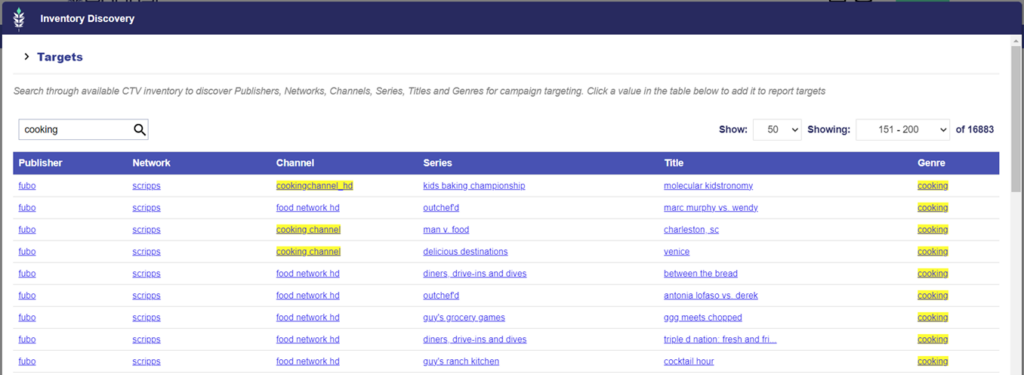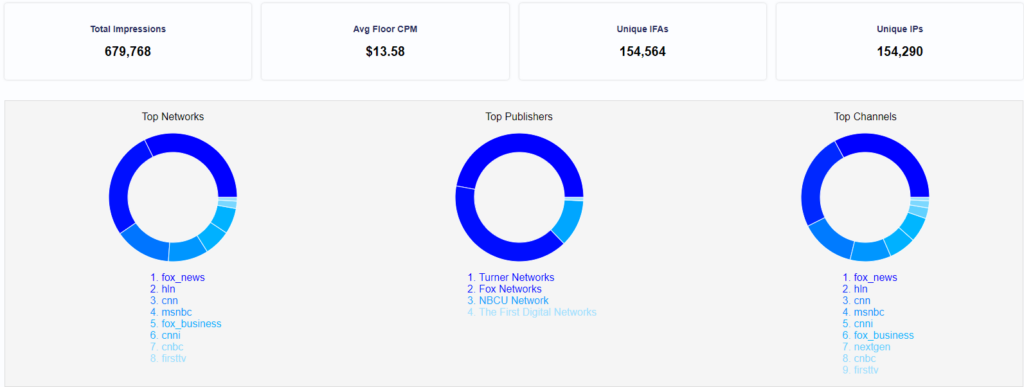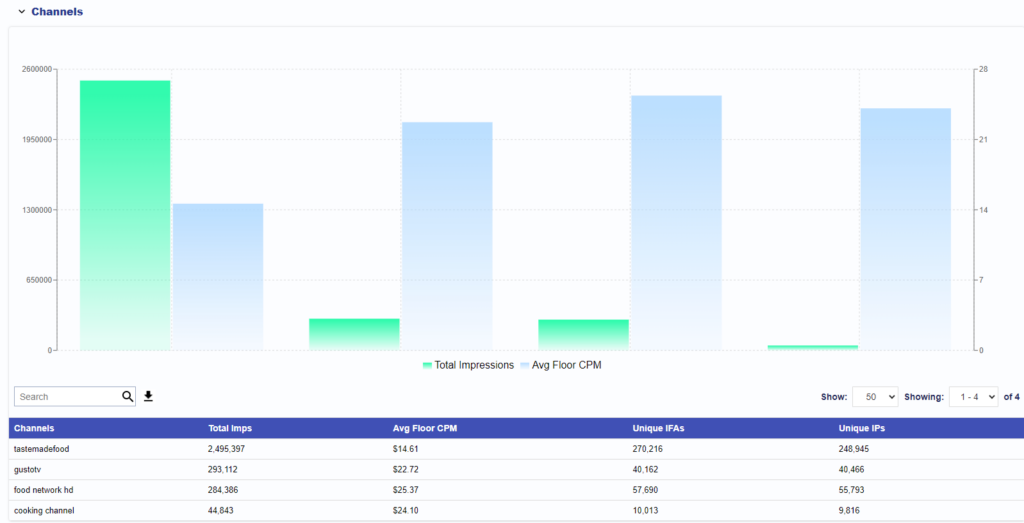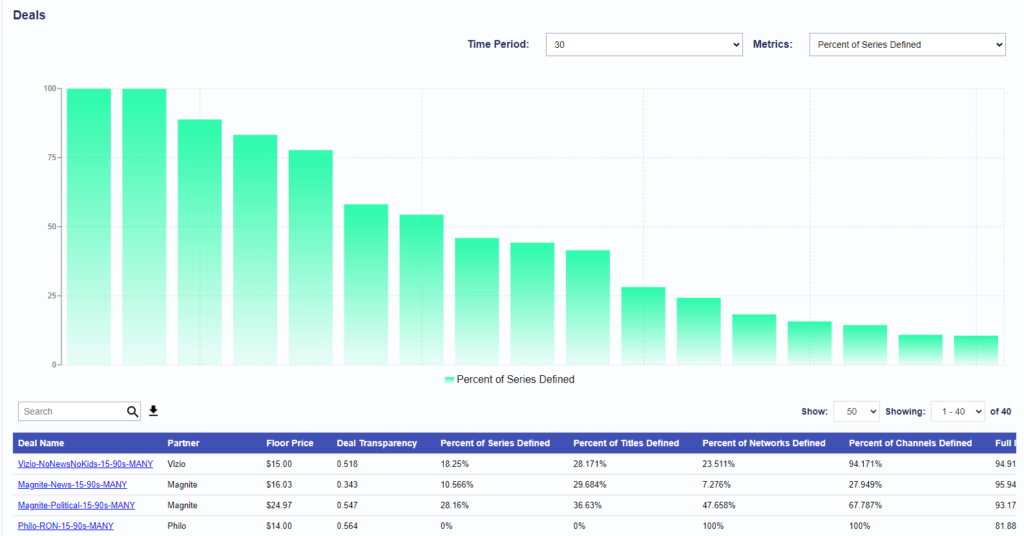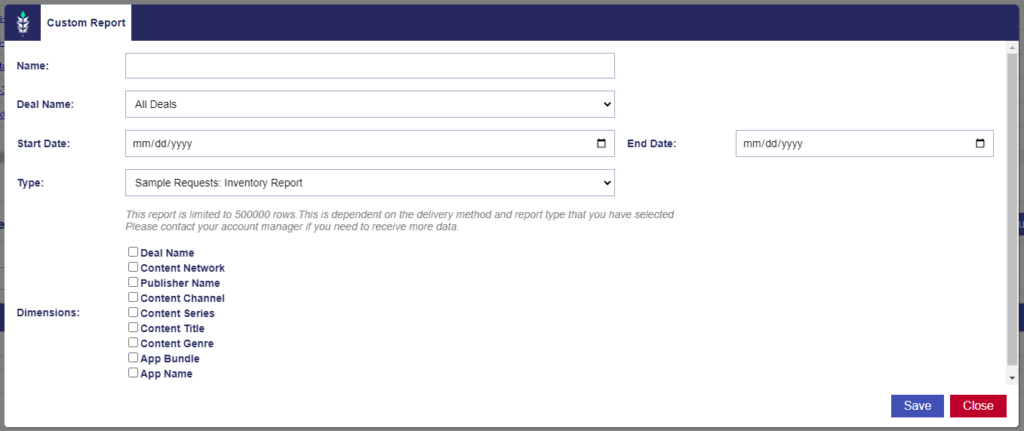Deals
The Pontiac Partnership team works directly with publishers to curate the catalog of Private Marketplace deals that is available to all advertisers on the Pontiac platform. Programmatic deals provide priority access via an invite-only auction to inventory that may not otherwise be available on the open exchanges. Private-Marketplace (PMPs) Deals or Programmatic Guaranteed (PG) Deals can be used on the Pontiac platform as supply sources.
- Private Marketplace (PMPs): These are private, invite-only auctions that provide higher priority access to inventory than the open exchange. PMPs are one to many deals and in most cases do not require minimums or spend commitments. These deals have a price floor or minimum bid required to enter the auction, but closing prices are determined by real time bidding.
- Programmatic Guaranteed (PG): PG deals are a form of programmatic direct deal that are created between a publisher and one advertiser with a fixed rate and guaranteed volume of impressions. There is no auction and the advertiser is required to purchase all of the impressions coming through the deal id, all targeting must be applied on the supply-side. This is the highest priority for programmatic deals.

Benefits of Buying through Deals
While open exchange inventory is available for CTV or OTT, it is recommended to purchase streaming TV content through a programmatic deal. These are some of the benefits to buying through a PMP:
- Premium Inventory: many CTV publishers exclusively monetize through deals and more premium inventory may be inaccessible through open auction.
- Higher priority access: the inventory is higher priority in the publisher waterfall, which may provide higher volume and better reach than open exchange buying.
- Direct relationship: since deals are configured through a direct invitation from the publisher or media owner, this fosters a relationship that affords higher transparency, easier troubleshooting, and
- Fraud prevention: given the direct publisher relationship, the inventory in deals is less susceptible to ad-fraud than inventory across the open exchanges. While the Pontiac platform has anti-fraud protections in place, buying through PMPs can further protect advertisers against potentially fraudulent inventory.
Pontiac Deal Catalog
The Pontiac premium video deal catalog can be found in the ‘Inventory’ tab of the platform, under ‘Deals’. When selecting deals that best align with your campaign goals, it is recommended to review all columns in this table to ensure your creatives meet specs, approval processes are completed, and campaigns are correctly configured to drive success. You may also want to review the CTV landscape tool, to understand the level of transparency in data shared by each CTV deal. Sample logs and forecasting reports are also available for each deal in the ‘ART’ tab, for more information see Planning Tools
- Deal Provider: this is the entity that has a direct relationship with Pontiac and supplied the deal id.
- Brand: the brand or publisher of the content in the deal.
- Content Type: the category or type of content the user will be streaming when they see your ad. Run of Network (RON) indicates the deal includes all inventory from the publisher or deal provider.
- Media Type: the type of media, either Streaming/CTV (streaming TV placements on any device including mobile, desktop & TVs), OLV (online video – in app and web video not in streaming TV content).
- Exchange: the SSP or supply-side platform the deal provider is using to send the bid requests to Pontiac’s bidder.
- Floor Price: the minimum bid price (CPM) required to enter the auction on this deal.
- Recommended Bid: recommended bids are supplied by the publisher and may take into account variable floors within the deal for different inventory, the levels of competition etc.
- Duration: allowed durations for the ad unit – if multiple durations are listed, hover over the duration help tool to see the percentage of requests on the deal that allow each duration.
- Device Types: Connected TV, Set top box, computer, mobile device, tablet – this is the kind of device the impressions are running on. Hover over the device type help tool to see the percentage of requests on the deal for each device type.
- Sizes: allowed sizes for the ad unit – if multiple sizes are listed, hover over the duration help tool to see the percentage of requests on the deal that allow each duration.
- Livestream: the % of impressions that are ‘live’ vs. ‘on demand’ or ‘undefined’.
- Auction Type:
- First price: when an advertiser wins the auction, they pay the price they bid
- Second price plus: when an advertiser wins the auction, they pay $0.01 above the second highest bid in the auction
- Permitted Sensitive Categories: ad units flagged as ‘sensitive’ contain content that is only allowed to run through deals that specifically state that they allow the content here.
- Publisher Approval Required: this deal requires each ad to be submitted directly to the publisher for approval prior to launching a campaign. Reach out through the Help Center to submit your ads for approval. Include the creative asset, the advertiser’s website and the deal ids.
- Notes: any additional information regarding the deal requirements or restrictions, and inventory included or targeting applied on the supply-side.
- Last Served Date: the last date where impressions were actively seen coming through the deal.

Negotiated Deals
Looking for a deal that is not currently available in the catalog? Reach out through the Help Center and the Pontiac Partnership team may be able to negotiate a deal on your behalf. Any programmatic guaranteed deals or deals negotiated for specific advertisers will appear in the ‘Inventory’ tab under ‘Negotiated Deals’.

